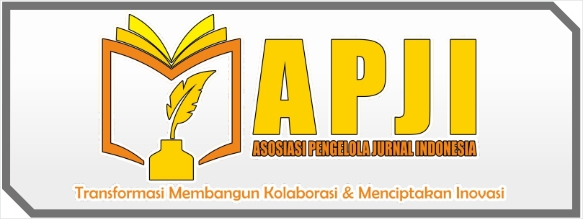 |
 |
 |
 |
 |
 |
 |
 |
 |
 |
 |
 |
| More Indexing and Abstracting |
View My Stats |
| Overall Visitor Statistics |
 |
We recommend authors to screen Similarity Index before submitting an article to our journal. It makes sure the article is original. Every article submitted to Jurnal Kecerdasan Buatan dan Teknologi Informasi is screened by Turnitin, a plagiarism detector software. If a manuscript has over 25% of Similarity Index based on the result of the Turnitin check, we will send back the manuscript to the author to be revised.
The Editorial Team of Jurnal Kecerdasan Buatan dan Teknologi Informasi Journal acknowledges that plagiarism is unacceptable and therefore establishes the following policies that state specific actions (penalties) if plagiarism is identified in an article submitted to be published in the Jurnal Kecerdasan Buatan dan Teknologi Informasi Journal.
Definition:
Plagiarism is an act intentionally or unintentionally in obtaining or trying to obtain credit or value for scientific work, by quoting part or all of the work and/or scientific work of other parties that are recognized as scientific works, without expressing the source appropriately and adequately.
For that, then:
Articles must be original, never published, and not in the process of waiting for publication elsewhere. Material taken verbally from other sources needs to be clearly identified so that it is different from the original text.
If plagiarism is identified, the Editor in Chief is responsible for reviewing the article and will approve the action in accordance with the level of plagiarism detected, with the following guidelines:
Plagiarism Level
All authors are responsible for the content of the articles they submit. If the article is found to be plagiarized, all authors will face the same punishment. If it is confirmed that the author submitted a paper to Jurnal Kecerdasan Buatan dan Teknologi Informasi journal while also submitting it to other journals, and this overlap is found during the reviewer process or after publication, action is taken following point 2 above. If plagiarism is discovered outside the above-mentioned standards, the editor of Jurnal Kecerdasan Buatan dan Teknologi Informasi Journal has the authority to impose punishments following the editor's team's policy.
Deals of Misconduct
The Editor-in-Chief considers retracting a publication if the following criteria are met:
Notices of retraction should:
Retractions are usually not appropriate if:
 |
 |
 |
 |
 |
 |
 |
 |
 |
 |
 |
 |
| More Indexing and Abstracting |
View My Stats |
| Overall Visitor Statistics |
 |
| Jurnal Kecerdasan Buatan dan Teknologi Informasi | ||
| Publisher | : | Ninety Media Publisher |
| Address | : | Perumahan Green Asia, Blok i2-04. Desa Bagik Polak Kecamatan Labuapi Kabupaten Lombok Barat |
| Website | : | https://ninetyjournal.com/ | https://ojs.ninetyjournal.com/index.php/JKBTI |
| : | journal.jkbti@gmail.com | admin@ninetyjournal.com | |
| Contact | : | 085337626083 |
|
|
||
